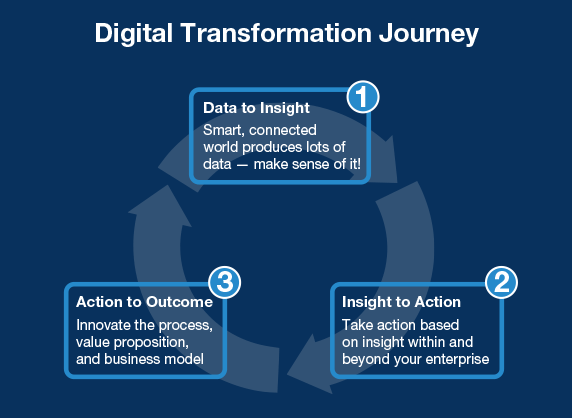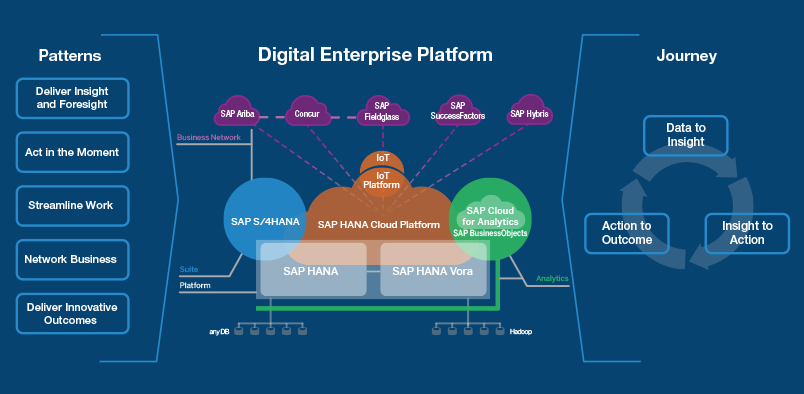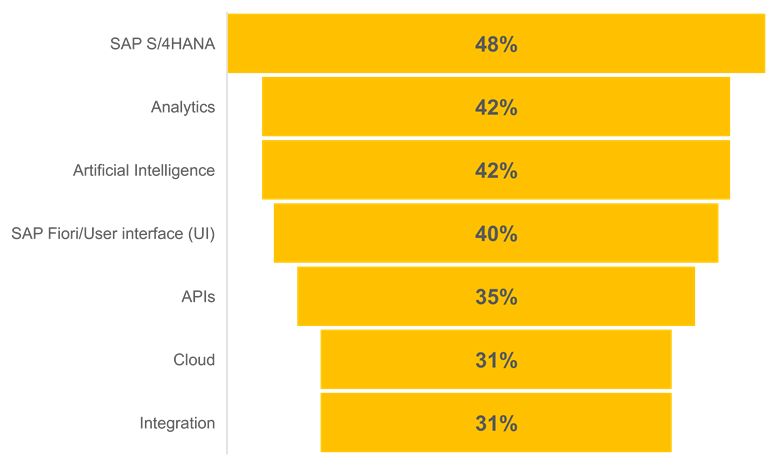5 Tangible Benefits of Digital Transformation
How Digital Technologies Can Increase Insight and Innovation in Your Business
For many business users, “digital transformation” is no more than a buzzword. It is difficult for most professionals to determine where and how they are impacted or what tangible results they can get from digitizing their enterprise. To give the term weight beyond its buzzword status, let’s look at it from the customer’s perspective and examine what embarking on a digital transformation journey means in real business terms.
Demystifying Digital Transformation
Even to the casual observer, the existence of technology trends such as hyperconnectivity, smart devices, and cloud computing is obvious (see the sidebar “What Are the Key Technology Trends Driving Digital Transformation?”). In a connected world, organizations have access to a plethora of data and the abundance of computing power allows them to leverage it across the value chain in the form of rich, contextual information.
Digital transformation, therefore, is simply the route that companies take toward leveraging this abundance of data and connectivity to change the way they compete and create value. It shifts the focus of value extraction from the hard assets and business processes companies control to information from and about those assets and business processes. This allows companies to improve how they currently operate, create new business models and sources of value, and maintain a competitive advantage. Business leaders who don’t seize this opportunity will see their business models and enterprise value erode — and be left behind the competition.
A digital transformation involves three key steps (see Figure 1):
- Converting data to insight, where you collect and make sense of your data
- Infusing insight to action, where you leverage the insight as an action within a business process, be it in your business application or business network
- Transforming action to outcome, where you reinvent business processes — or even business models — and create a stronger value proposition

The concept of digital transformation is already producing tangible, real-world results. Take, for example, sensors on equipment in manufacturing plants. These sensors can provide data that helps predict an equipment failure before it happens, increasing effective maintenance on the shop floor. In the healthcare industry, contextual data enables advances in important areas such as cancer therapy. Innovative healthcare systems can analyze the success of certain treatments or medicines alongside a patient’s genome characteristics, increasing the likelihood of landing on the best treatment for that patient. These use cases just begin to scratch the surface of the potential of digitization.
The 5 Patterns of Digital Transformation
To better understand this potential, industry teams at SAP recently took a systematic look into what digital transformation means for specific industries to see what use cases might arise from digitally transformed processes. In each of the more than 40 use cases that were found, companies with mature digital transformation displayed five essential patterns (see Figure 2):
- Deliver insight and foresight by analyzing real-time and historical data and by using predictive models with intuitive visualization to identify business opportunities and risks. This helps to determine the most effective maintenance to prevent equipment breakdown or to choose the cancer treatment with the highest probability of success, for example.
- Act in the moment by using real-time insights to enable customers, workers, suppliers, and machines to seize opportunities immediately and take collaborative action at the moment of greatest impact.
- Streamline work by increasing automation, usability, collaboration, and real-time processes to improve efficiency. This enables you to market to a “segment of one,” capturing the individuality demanded by customers by improving the economics of your processes.
- Network the business by connecting internal business processes, labor, ecosystem partners, and customers to deliver a new level of transparency and create increased value that goes beyond the boundaries of the enterprise. By overcoming these boundaries, you can leverage the power of new networks and rethink the value you deliver.
- Deliver innovative outcomes by developing new solutions, processes, services, and business models in an agile way to create greater value for the customer and the supplier, and to form a deeper understanding of what customers really care about. If you’ve spent years selling equipment to customers, you need to learn how uptime of the equipment is ensured and then you can transfer to selling the uptime instead.
The recurrence of these five patterns across the different use cases of digital transformation demonstrates their relevance and comprehensiveness. Understanding and pursuing these business outcomes of digital transformation is the first step to realizing the value of digital technologies and to beginning the digital transformation journey.

Embracing a Digital Transformation with SAP Solutions
SAP offers a range of solutions that can help you become a digital enterprise to take advantage of the benefits of a digital transformation (see Figure 2). SAP’s digital enterprise platform, including SAP S/4HANA, the SAP HANA platform, and a host of other technologies, together with the enterprise and business network solutions, can provide you with a comprehensive solution set to go through a digital transformation. To harness the insights of unprecedented data volumes, SAP HANA, SAP HANA Vora, and SAP’s analytics portfolio can all help you to derive relevant and actionable insights.
In addition to SAP S/4HANA, SAP Business Suite, and other business network solutions, industry solutions offer opportunities to directly put your insights to action. And, last but not least, SAP HANA Cloud Platform can help you easily extend and innovate your business processes or even your business models to transform your business. With the right tools and a clear understanding of what digital transformation means, you can move beyond the buzzword and toward tangible business results. To learn more about embarking on your digital transformation journey, visit https://discover.sap.com/hana and https://hana.sap.com.








